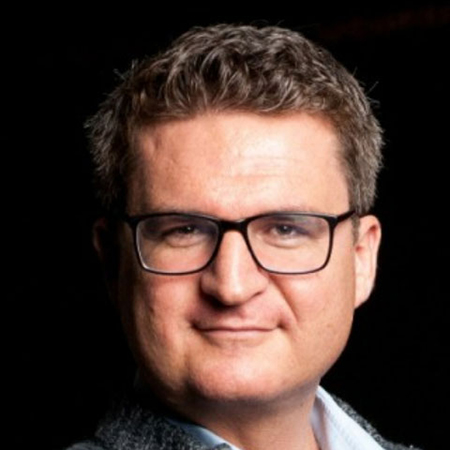Market Intel: Lessons Learned From COVID-19: A Global Perspective On Digital Health Transformation
Executive Summary
Health leaders in Sweden, Norway, Australia, Canada and Taiwan predicted the universal impact of digital solutions during the pandemic and lessons learned that will impact future care.
While the experiences and strategies for combatting the COVID-19 pandemic may differ from one region to another, they have all seen the tremendous impact of digital technologies, according to a recent panel discussion of health care/tech leaders from around the world.
All the experts emphasized the importance of keeping patients and doctors connected and health care workers safe during the crisis, but they all believe that the digital transformation will provide many more opportunities to come. (Also see "Pandemic ‘Dividend’ Must Not Be Squandered" - Medtech Insight, 7 Sep, 2021.)
The Impact
The impact from the pandemic has been “exciting for innovators” but often “very stressful for clinicians,” Ted Scott, chief innovation officer at Hamilton Health Sciences, told listeners during a recent AdvaMed MedTech Conference panel discussion focusing on “Lessons learned from COVID-19.” Scott overseas research for a community of 15,000 staff, physicians and researchers serving southwestern Ontario, Canada.
 Ted Scott, vice president research and chief innovation officer of Hamilton Health Sciences
AdvaMed
Ted Scott, vice president research and chief innovation officer of Hamilton Health Sciences
AdvaMed
He said that in the past, the publicly funded health system had been struggling to attract funding to create a digital business model for practitioners.
That all changed when the pandemic hit.
“It suddenly became possible to adopt many of the virtual care solutions that we previously have not been able to move forward … virtual care visits and other things, which really added tremendous value to our patient experience, and, in many cases, has made our system much more efficient,” Scott said.
Scott’s experience is in stark contrast to perspectives shared from panelists from Sweden and Norway. Their countries have similar populations and health care systems but they were already highly digitized before the pandemic.
Sweden is already a “highly digitalized society” where citizens have access to personal data on their own care, treatment and health status online, said Karina Tellinger McNeil, coordinator of Strategist e-health for Sweden’s citizen-centered strategy that uses information and communication technologies to improve health care for all.
She shared that the pandemic has led to an increase in the use of the “national health portal,” which also provides information on pandemic-related issues, such as treatment options and vaccination sites. The portal has also seen a sharp rise in demand for online consultations with physicians and for services.
“The pandemic was a boost on our already existing digital national services, but they also increased demand for new solutions [which was challenging as it put pressure on the current system],” McNeil explained.
 Karina Tellinger McNeil, coordinator, strategist E-Health, Vision for E-Health 2025
AdvaMed
Karina Tellinger McNeil, coordinator, strategist E-Health, Vision for E-Health 2025
AdvaMed
As in other countries, in Norway, the pandemic promoted innovation and remote care solutions, said Trine Radmann, head of international affairs at Norway Health Tech, a technology cluster facilitating the growth of innovative health care solutions.
“All patients [in Norway] … know more about their health than ever before,” Radmann said, adding that the pandemic has driven innovation that linked together different systems and led to more connectivity and better communication.
Stefan Harrer, the chief innovation officer for Australia’s Digital Health Cooperative Research Centre said his country’s adopted strategy of hard lockdowns since the start of the pandemic, even with moderate case numbers, has compelled the adoption of telehealth and virtual care to accommodate for routine services.
Even before the start of the pandemic, mental health disorders accounted for the highest disease burden in Australia, 46%, followed by neurological disorders with 37%.
“Through these hard lockdowns, the general burdens that came with dealing with COVID has been really amplified,” Harrer said. But as seen in the US, in Australia, the pandemic enticed companies to develop innovative solutions that found their way to the market thanks to the government’s easing of COVID-19-related regulatory restrictions, such as the creation of new reimbursement models.
Sean Wang, president of ITRI International Inc. in San Jose – a subsidiary of the Industrial Technology Research Institute in Taiwan – said Taiwan learned valuable lessons from the SARS (severe acute respiratory syndrome) outbreak in 2003.
“There were only about 800 cases at that time, but people realized that masks and self-quarantine is key,” Wang told the audience. When the COVID-19 pandemic hit Taiwan, people immediately started to isolate and followed mask mandates, he said. He also attributes the use of contact-tracing with testing and isolation of confirmed cases for keeping COVID-19 at bay. (Also see "Pandemic Perspectives: Riding The Waves Of Asia’s Healthtech Innovation Explosion" - Medtech Insight, 11 Mar, 2021.)
 Sean Wang, president of ITRI International Inc
AdvaMed
Sean Wang, president of ITRI International Inc
AdvaMed
According to an editor’s note in JAMA Internal Medicine from 1 May 2020, as of late April 2020, Taiwan had about 330 confirmed cases of coronavirus disease and six deaths out of a population of 24 million people. That compared to 1 million confirmed cases of COVID-19 and 60,000 deaths in the US. As of late September, COVID-19 cases were down to the “single-digits” in Taiwan, Wang said.
Changed Patient Experience
To alleviate the stress of frontline workers during the pandemic, ITRI and Taipei Medical University Hospital, Radica Health, Tranwo Technology Corp, Microsoft Taiwan and other industry groups and academic institutions jointly developed a contact-free monitoring system that allows health care workers to remotely monitor patients’ vital signs such as heart rate, respiratory rate, body temperature and bed-exit events in real time.
The Contact-free Connected Health Care Platform collects patients’ vital signs, imaging and test results, analyzes it, and provides alerts if anything is abnormal. Wang said the remote sensing technology has reduced the need for nurses to physically enter a patient’s room from about 15 times a day to two, and thus, greatly reduced the risk of infection for nurses. And there are many other developments on-going, such as placing spirometers, devices that will expand the lung to help someone breath, at patients’ homes.
“The trend is trying to move away from hospital use to personal use but still with digital and AI capability connected,” Wang said. “These are the major trends, because the health care system in Taiwan has been quite well developed and it’s a single-payer system and well taken care of.”
Telehealth consultations has increased dramatically since the start of the pandemic and the panelists believe that virtual visits are here to stay, but not to the extent where it will replace office visits with doctors.
“The trend is trying to move away from hospital use to personal use but still with digital and AI capability connected. These are the major trends, because the health care system in Taiwan has been quite well developed and it’s a single-payer system and well taken care of.” – Sean Wang
Before the pandemic, in Sweden, online consultations were offered mostly by start-ups, but have since extended to regions implementing virtual consultations themselves to meet the rising demand by patients, McNeil explained.
“I think the public feels that the pandemic has made it easier to get in contact with your physician, but it’s been harder to get a physical meeting [to avoid risk of infection],” she said.
Both McNeil and Radmann touted the implementation and adoption of public electronic health records as self-empowering patients. By giving patients access to their own health data, they can better manage their own health and be an active part of the care team.
Sweden’s McNeil admitted that not all physicians liked the idea of making patients’ health records public, but said patients love getting access to the information they need to get a better understanding of their disease and treatment methods and being able to share that information with relatives.
Norway’s Radmann pointed to the convenience of having all health records in one place, which has been particularly beneficial during the pandemic, because “the different systems are communicating with each other to help the patient.”
 Trine Radmann, Head of International Affairs, Norway Health Tech
AdvaMed
Trine Radmann, Head of International Affairs, Norway Health Tech
AdvaMed
She also noted that the people of Norway pride themselves in helping others and often volunteer. When the pandemic hit, people readily adopted strategies, such as social distancing, as a way to contribute to the common good.
Meanwhile in Canada, Scott said, the “patient experience has been near the bottom of the list of priorities” while the focus has been more on providers and institutions. But that also changed during the pandemic. In the past, orthopedic clinics filled up their waiting rooms with up to 50 or 100 patients at a time. Patients sat for hours until their name was being called, which was done mainly for the convenience of the doctor, he said.
With the demand for physical spacing during COVID, the clinic was no longer able to pack patients into waiting rooms but started texting individual patients to flow them in and out of the clinic.
“It’s really a simple technical solution,” but it fundamentally changed the patient’s experience, Scott noted, adding that this is just one example of changes that ultimately benefit the patient experience.
Scott described the transition to a “new normal” as an “exciting time” with health systems reimagining new care pathways aiming to strip away duplicative efforts and leveraging telehealth and virtual care. The priority is now shifting to promoting patient engagement and connecting patients with providers, he said.
New Normal
He offered another example where virtual care has improved access for patients.
In the past, he said, a heart failure clinic would see a patient every six weeks to optimize medications, but with virtual visits, patients’ medications can be dialed in in less than a week now. Similarly, rehabilitation services are also now being offered for patients to do exercises at home.
“There’s a myriad number of ways in which we can improve. My hope is that we continue to discover new ways of enhancing the care and the outcomes,” but everyone agrees that finding the “sweet spot for virtual care versus face-to-face visits” remains challenging, he said.
Harrer said the pandemic has been a “turbo-charger” for telehealth and remote care in Australia and expects that trend to continue. He agreed with other panelists that virtual care however will not replace physical doctor visits.
“What should stay face-to-face and what should not is really depending on the patient experience,” he said. “This is a very important interaction between carer and patient … it should be really a supportive system, not a replacement.” Patients in urban Melbourne may want or need different experiences and health services than people in rural communities.
“What should stay face-to-face and what should not is really depending on the patient experience.” – Stefan Harrer
And he noted that it is critical that developers of new telehealth services work very closely with users to figure out what works and what doesn’t work.
“That feedback is utterly important to get telehealth right, because you can have the best service – if it’s not adopted, if it’s not trusted, if it doesn’t create any value, it will not be used,” he stressed. “We constantly look into this and adept and develop and innovate these services in an agile way and that is what we see going forward.”
In Taiwan, the digitalization of health care is well underway and telehealth is a vital part of reaching rural communities, Wang said. But he echoed Harrer’s view that it cannot replace the human touch. He praised a doctor who made it his priority to voluntarily serve the people in mountain villages. (Also see "Market Intel: Why Telehealth, Digital Therapies Will Provide Mental Health Support Beyond COVID-19 Crisis" - Medtech Insight, 5 Aug, 2020.)
Taiwan’s government and the private sector are creating a roadmap that focuses on caring for the aging population and shortage of health care workers. He said that Taiwan is also currently piloting a smart hospital with newer technologies aimed at improving care and prevention and creating efficiencies.
Aging at home is also a focus of the Australian digital health strategy, Harrer said, noting that the aging population in Down Under that is a highly addressable market.
“It has been assigned a very substantial amount in the recent federal budget and has been identified as a key area for investment in research and development for the next three to five years and beyond,” he said. “There’s a real opportunity here, because we see a lot of excitement and a positive attitude towards these technology-driven telehealth solutions, especially in the aging care space … but also by their families who are very tech-savvy generations.”
Similarly, in Sweden, McNeil said the older generation is staying healthier compared to previous generations and they are tech-savvier. She said that 73% of people ages 76 and older are online and 90% of people between 65 and 75 are active online, which means that Sweden will have to rethink aging care as well. She also feels that Sweden puts the patient at the center and also understands that patients are a resource for the health care team, which is good economically and for the patient.
Scott hopes that the patient will also be more actively involved in their health care in Canada.
“Our folks have been very reactive and passive consumers of health care and our hope is to shift that dynamic to being much more proactive,” he said. He noted that the inability of patients to come to the hospital and doctor’s office has created a backlog for things like cancer screenings, and that could be something where patients can be more proactive.
“That’s just one example, but you can imagine across the continuum of care many different areas where patient engagement would drive value for their health outcomes and experience,” he said.
“My hope is as we embrace technology … we also work really hard to simplify and drive better outcomes by focusing on the basics as well.” – Ted Scott
Barriers
Harrer said that digital health is about data flow and that is where value is derived, but interoperability, or the ability to exchange information across the care continuum, remains a big barrier. (Also see "Expert Panel Says Interoperability Remains Barrier In Digital Surgery Transformation" - Medtech Insight, 11 May, 2021.)
“There’s good onsets there … we see a lot of progress but that is surely a field where we need to keep focusing on to make sure that, at the end of the day, we build fully integrated scalable modular interoperable data highways rather than isolated data links,” he said.
 Stefan Harrer, chief innovation officer of Digital Health Cooperative Research Centre
AdvaMed
Stefan Harrer, chief innovation officer of Digital Health Cooperative Research Centre
AdvaMed
Traditional pharmaceutical companies are becoming data-driven players, such as using intelligent monitoring systems in clinical trials. Harrer considers digital therapeutics tied into novel care models the backbone of telehealth for the future.
More telehealth solutions are also being integrated across different comorbidities, such as helping epilepsy patients manage their care by also addressing common comorbidities such as anxiety and depression.
Scott agreed that digital solutions offer many opportunities for the future of health care, but said it’s important to consider simple solutions such as cancer screenings are very impactful when it comes to population health issues.
“My hope is as we embrace technology … we also work really hard to simplify and drive better outcomes by focusing on the basics as well,” he said.
